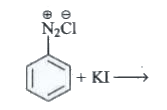Water potential can be obtained by
OP + TP
OP = WP
ΨS+ΨP
OP - DPD
The correct Answer is:C
To find out how water potential can be obtained, we need to understand the relationship between water potential, solute potential, and pressure potential. Here’s a step-by-step solution:
1. Definition of Water Potential (Ψw):
Water potential is a measure of the potential energy in water, which determines the direction of water movement. It is represented by the symbol Ψw.
Hint: Remember that water potential indicates how likely water is to move from one area to another.
2. Components of Water Potential:
Water potential is the sum of two components:
- Solute Potential (Ψs): This is the effect of solutes on the free energy of water. The presence of solutes lowers the water potential, making it negative.
- Pressure Potential (Ψp): This is the pressure exerted by the water within a cell against the cell wall. It can be positive (turgor pressure) or negative (in cases of tension).
Hint: Think of Ψw as a combination of how much solute is present and the pressure exerted by the water.
3. Mathematical Relationship:
The relationship can be expressed as:
Ψw=Ψs+Ψp
This equation shows that water potential is the sum of solute potential and pressure potential.
Hint: Use this equation to calculate water potential if you know the values of solute potential and pressure potential.
4. Understanding the Values:
- Pure water has a water potential of zero under standard conditions (no solutes and atmospheric pressure).
- When solutes are added, the solute potential becomes negative, thus decreasing the overall water potential.
Hint: Recall that the more solute present, the lower (more negative) the solute potential will be.
5. Direction of Water Movement:
Water moves from areas of higher water potential (less negative) to areas of lower water potential (more negative). This movement is driven by the difference in water potential.
Hint: Visualize water moving from a dilute solution (high Ψw) to a concentrated solution (low Ψw).
Conclusion:
Water potential can be obtained using the equation Ψw = Ψs + Ψp, where Ψs is the solute potential and Ψp is the pressure potential. This relationship helps in understanding how water moves in plants and the effects of solutes and pressure on water movement.
Water potential is a measure of the potential energy in water, which determines the direction of water movement. It is represented by the symbol Ψw.
Water potential is the sum of two components:
- Solute Potential (Ψs): This is the effect of solutes on the free energy of water. The presence of solutes lowers the water potential, making it negative.
- Pressure Potential (Ψp): This is the pressure exerted by the water within a cell against the cell wall. It can be positive (turgor pressure) or negative (in cases of tension).
The relationship can be expressed as:
Ψw=Ψs+Ψp
This equation shows that water potential is the sum of solute potential and pressure potential.
- Pure water has a water potential of zero under standard conditions (no solutes and atmospheric pressure).
- When solutes are added, the solute potential becomes negative, thus decreasing the overall water potential.
Water moves from areas of higher water potential (less negative) to areas of lower water potential (more negative). This movement is driven by the difference in water potential.
Water potential can be obtained using the equation Ψw = Ψs + Ψp, where Ψs is the solute potential and Ψp is the pressure potential. This relationship helps in understanding how water moves in plants and the effects of solutes and pressure on water movement.
Similar Questions
Knowledge Check
- Question 1 - Select One
Benzene can be obtained by :
AC6H5OH+NaOHCuO−−→ΔBC6H5OH+ZnΔCC6H5−N=N−Cl+H2O→DAll of these - Question 2 - Select One or More
Iodobenzene can be obtained by :
A B
B C
C D
D

